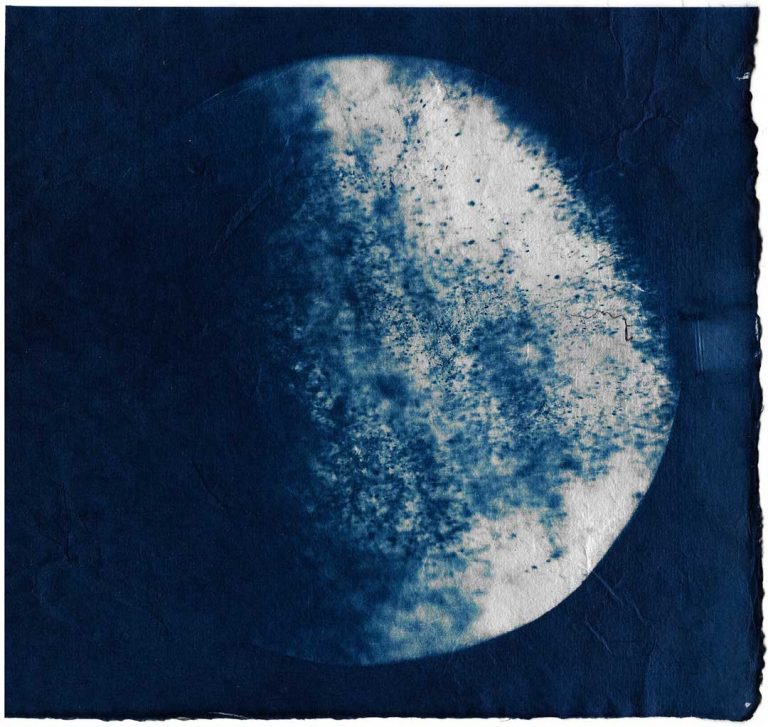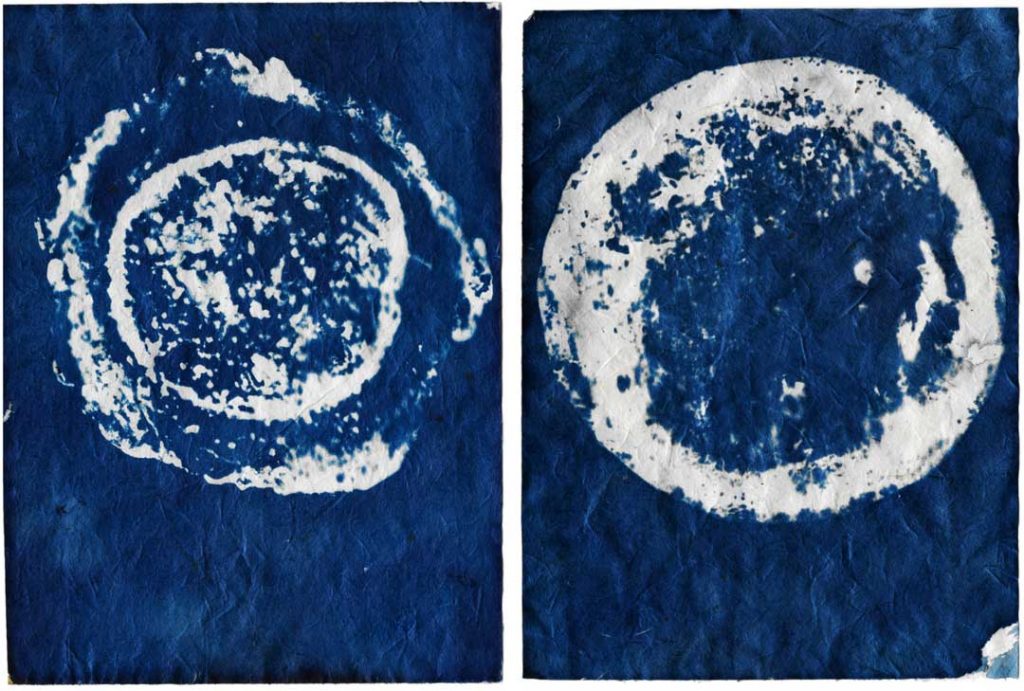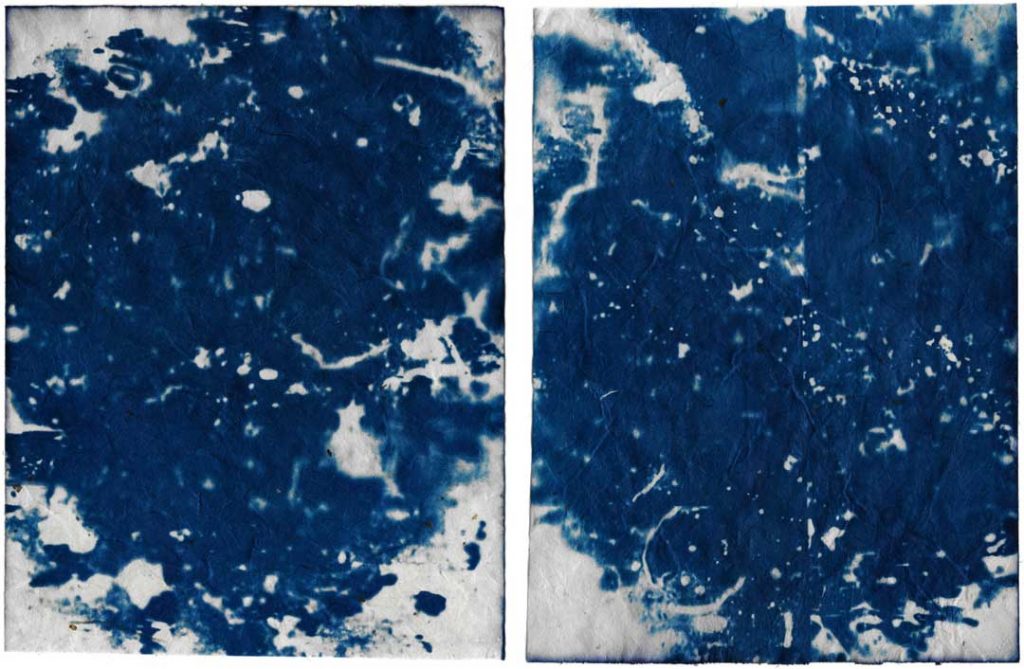
How to make the invisible, visible?
AIR by Marina Vitaglione

Beddington Lane, Croydon, South London, 21/07/2020
Marina Vitaglione is a visual artist and photo editor, whose work focuses on environmental issues. We asked her some questions about her practice and the new work about air pollution, called AIR, currently exhibited at the Lambeth Town Hall, London, until the 30th of June 22.
1. Could you tell us about your project AIR?
Air is intrinsic to life–yet fine particle pollution is now the biggest environmental risk of early death worldwide, killing 7 million people a year.
Linked to various physical and mental health issues like asthma or dementia, toxic air affects nearly everyone: 90% of the world’s population lives in places where pollution levels are above the World Health Organization’s recommended limits.
AIR is a photographic series that aims to visualise this ‘invisible killer’ by creating images of toxic fine particles. In collaboration with scientists from Imperial College London, who manage the London Air Quality Network, I gathered samples from several monitoring sites in inner and outer London that measure carbon dioxide, nitrogen dioxide, ozone and sulphur dioxide. The samples were collected and magnified through two different procedures: some were deposited onto a tape using a Beta Attenuation Monitoring device, and then photographed through a microscope, others were enlarged digitally through Raman spectroscopy.

Strand building rooftop, King’s College, Central London, 08-10/12/17
I then made cyanotypes out of the resulting close-up images of particulate matter. One of the oldest photographic techniques, cyanotype printing consists in coating a paper with a photosensitive emulsion, placing an object or a photograph negative on it and exposing it to sunlight. The cyan-blue tone of the pictures is reminiscent of pure, cloudless skies; and I used Philippine Yuki Gampi paper, whose handmade, thin and delicate sheets evoke the lightness of air itself.
This series was created as part of the Sustainable Darkroom Residency, organised by the London Alternative Photography Collective, and would not have been possible without the support and help of Paul Johnson, Laura Buchanan, Dr Stephanie Wright and Joseph Levermore, from the Environmental Research Group, part of the Faculty of Medicine at Imperial College London.

Brixton Road, Lambeth, South London, 20/08/20
2. Your project is truly multi-disciplinary. How did you start to think it was important to work with other disciplines and what this means for you?
I knew I wanted to work on air pollution, but I was not sure of how to approach the topic. I was wondering how I could make an invisible issue visible. I started to do some research on how fine particles are measured and analysed, and the different types of devices used. Looking for official figures in London, I discovered the London Air Quality Network–part of the Environmental Research Group at Imperial College, it measures and analyses samples from different sites and displays real-time pollution levels in various boroughs. I was interested in discussing their work and using some of their samples to make the photographs, this is how the collaboration came about. They were very enthusiastic about my approach and for the multi-disciplinary collaboration, as the images I created were also useful for them to communicate on their work.
3. What do you think the role of photography and contemporary art is, in communicating the complex issue of the climate emergency?
I think photography and art have an important role to play in communicating the climate crisis. More and more research and information is available on the topic, which can be difficult to understand, grasp or process.
Art is less factual and rational, and rather speaks to people on an emotional level. If someone is moved or touched by a photograph, they might then try to document themselves on the topic and see how to get involved to create change. A photograph can be both a document and an artwork, and this is why I find it so powerful.
4. Do you think the context and the way unconcerned or sceptical people approach the work needs deeper discussions in the field of contemporary photography?
My hope with this series is to raise awareness and generate positive social change at an individual and wider societal level, by reaching people who have the ability to work, or campaign, on the issue of air pollution. That is why I am particularly excited for the images to be exhibited at Lambeth Town Hall, where they are seen by local politicians working directly on specific programmes to reduce air pollution levels within Lambeth and greater London.

Strand building rooftop, King’s College, Central London, 16-19/04/17
If you want to know more about Marina Vitaglione’s work, find out here
Through the eyes of children
Education – Public Space – Social Innovation – Visual Art
Planetary Health and Visual Culture - David Cross
Education – Science – Visual Art
Secret Sarayaku - Misha Vallejo
Education – Social Innovation – Visual Art
Photography and the climate emergency - Symposium III
Education – Science – Visual Art
Empathy and Connection in Environmental Storytelling
Education – Science – Visual Art
Contemporary Photography and Public Engagement
Education – Public Space – Science – Social Innovation – Visual Art
Beyond photographic limits -
L. Fritz magazine
Mass Media – Visual Art
Alternative Aesthetics in Environmental Storytelling
Education – Science – Visual Art
Do we live on or are we part of a planet? - Frederic Hanusch
Education – Science
The need for a Xenourbanism - Rossella Ferorelli
Education – Public Space – Science
Towards Trans-disciplinarity
Education – Public Space – Science – Visual Art
How photography can address climate crisis as a social justice issue
Education – Mass Media – Visual Art
Visualizing the Climate Crisis:
Ocean Acidification
Science – Visual Art
Visualizing the Climate Crisis:
Virtual Water
Education – Science – Visual Art
Visualizing the Climate Crisis:
the Fashion System
Education – Mass Media – Visual Art
